Email sales@AllianceChemical.com for 24/7 Expert Support
-
512-365-6838
-
n-Propyl Alcohol ACS Grade
Category : Alcohols
$19.38
Liquid error (snippets/product-blocks line 100): divided by 0
Off
Unit price
/
Shipping Notice: Possible Hazmat Fees
💡 Smart Shipping Tip: Quart & Liter Sizes Often Avoid Hazmat Fees
This size may be classified as hazmat and can incur additional carrier fees. See shipping guide
- ✅ Good news: 1 Quart containers qualify as "Limited Quantity" and bypass hazmat rules
- 💡 Pro tip: Order multiple 1 Quart containers to avoid hazmat fees entirely
- 💰 Hazmat fees can get expensive - especially for larger containers (carrier charges, not our markup)
- 🚚 Ground shipping only - no expedited options for sizes over 1 Qt/1L
Required by 49 CFR § 173.150 for chemical containers larger than 1 quart. Actual fees shown at checkout. View our complete shipping guide →
✅ Great Choice! No Hazmat Fees
1 Quart containers qualify as "Limited Quantity" and avoid hazmat shipping fees.
- 🚀 Faster shipping: Eligible for expedited shipping options including air transport
- 💰 No hazmat fees: Ships as "Limited Quantity" per DOT regulations
- 📦 Convenient size: Perfect for testing or smaller applications
- ♻️ Smart choice: Order multiple quarts to get the volume you need without hazmat charges
Exempted under 49 CFR § 173.150 Limited Quantity provisions for containers ≤1 liter/quart. Learn more in our shipping guide →
Quantity
Size:
Variation:
-
$19.38Delivery every$18.41
-
$27.95Delivery every$26.55
-
$41.28Delivery every$39.22
-
$63.59Delivery every$60.41
-
$44.52Delivery every$42.29
-
$72.53Delivery every$68.90
-
$120.10Delivery every$114.10
-
$3,647.53Delivery every$3,465.15
-
$168.24Delivery every$159.83
-
$639.06Delivery every$607.11
-
$4,756.69Delivery every$4,518.86
-
$1,343.37Delivery every$1,276.20
-
$4,441.35Delivery every$4,219.28
-
$5,223.82Delivery every$4,962.63
-
$5,955.15Delivery every$5,657.39
$19.38
Liquid error (snippets/product-sticky-blocks line 69): divided by 0
Off
Unit price
/
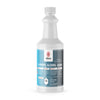
n-Propyl Alcohol ACS Grade
$19.38
Liquid error (snippets/sticky-product line 56): divided by 0
Off
Unit price
/
Size:
Variation:
-
$19.38Delivery every$18.41
-
$27.95Delivery every$26.55
-
$41.28Delivery every$39.22
-
$63.59Delivery every$60.41
-
$44.52Delivery every$42.29
-
$72.53Delivery every$68.90
-
$120.10Delivery every$114.10
-
$3,647.53Delivery every$3,465.15
-
$168.24Delivery every$159.83
-
$639.06Delivery every$607.11
-
$4,756.69Delivery every$4,518.86
-
$1,343.37Delivery every$1,276.20
-
$4,441.35Delivery every$4,219.28
-
$5,223.82Delivery every$4,962.63
-
$5,955.15Delivery every$5,657.39
Ask a question
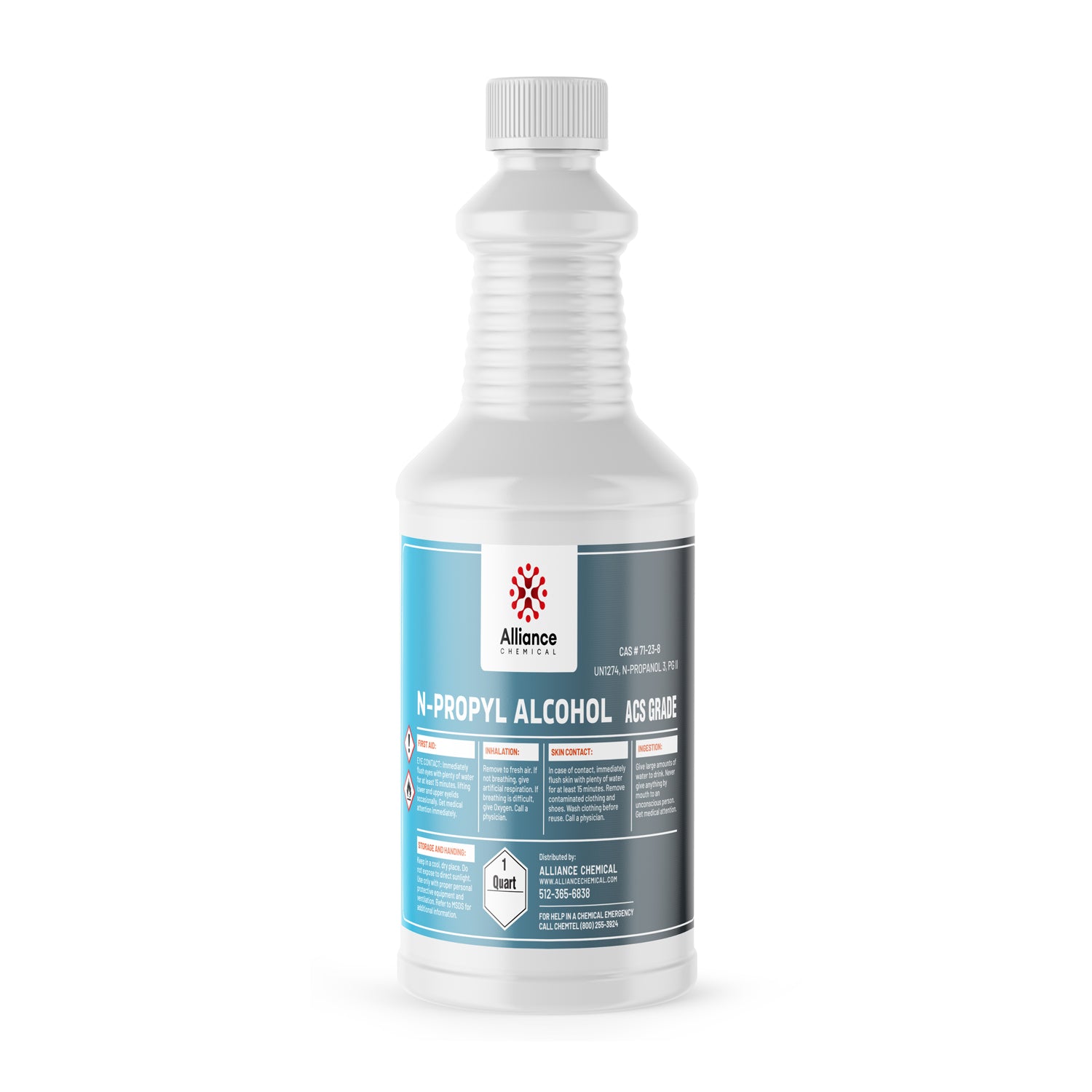

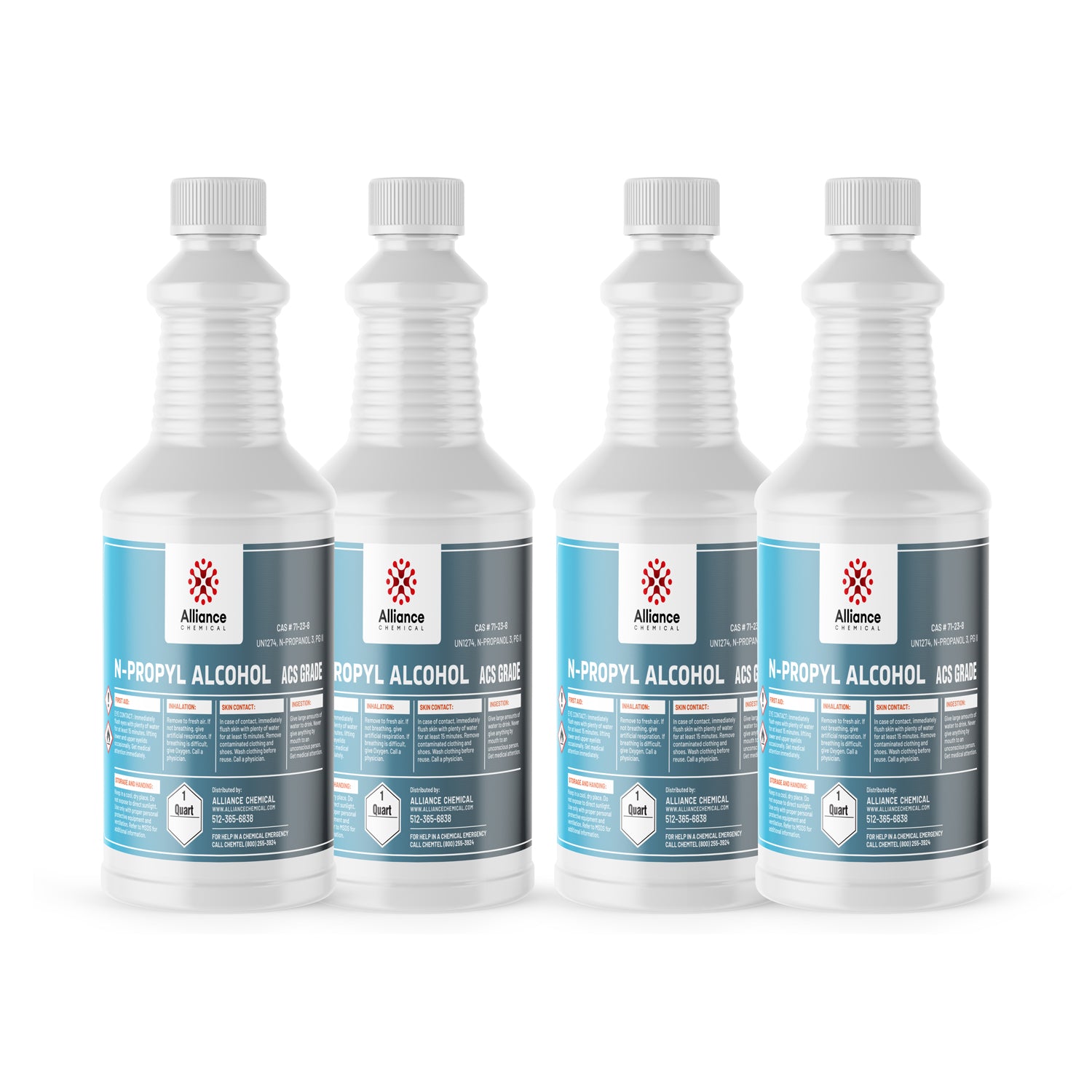
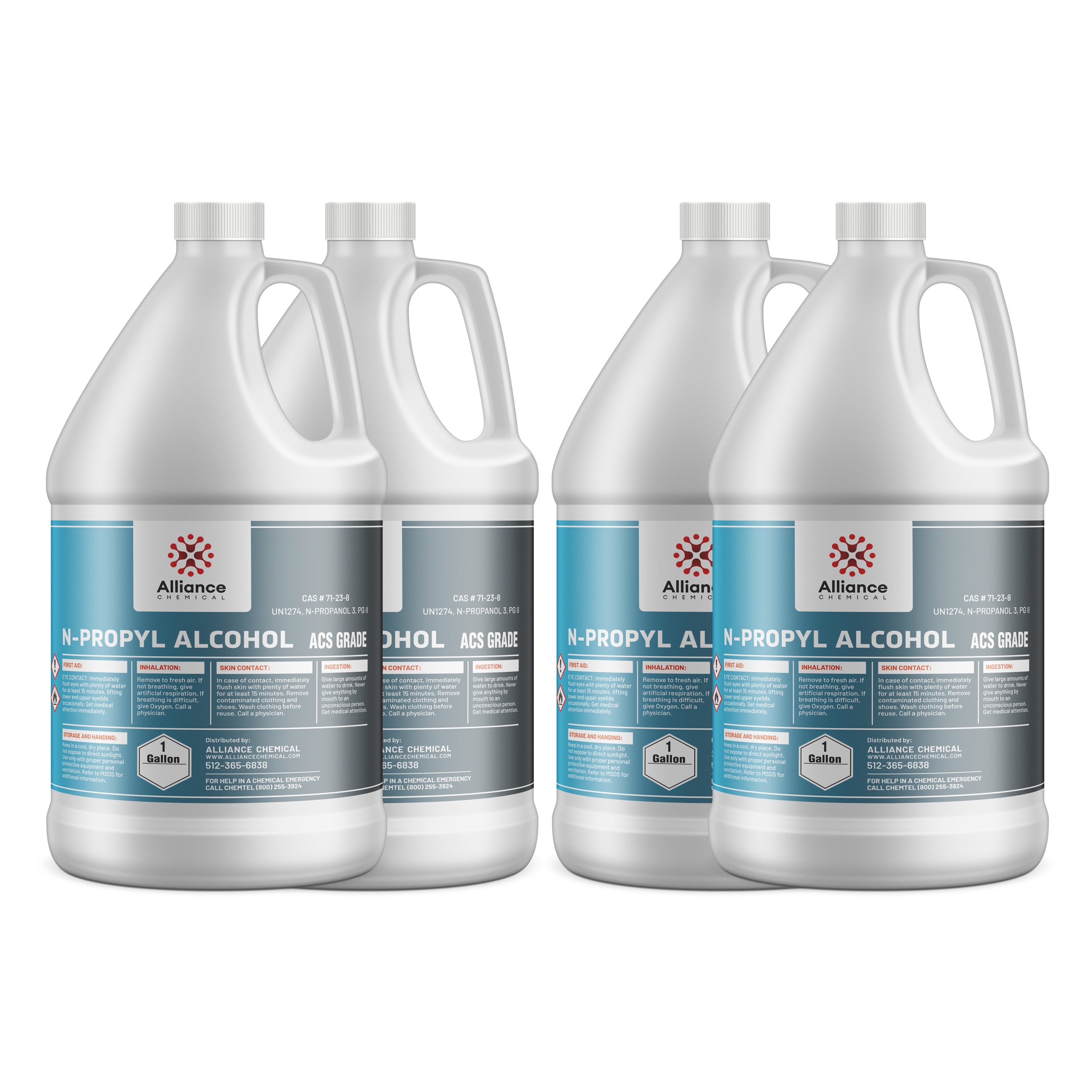
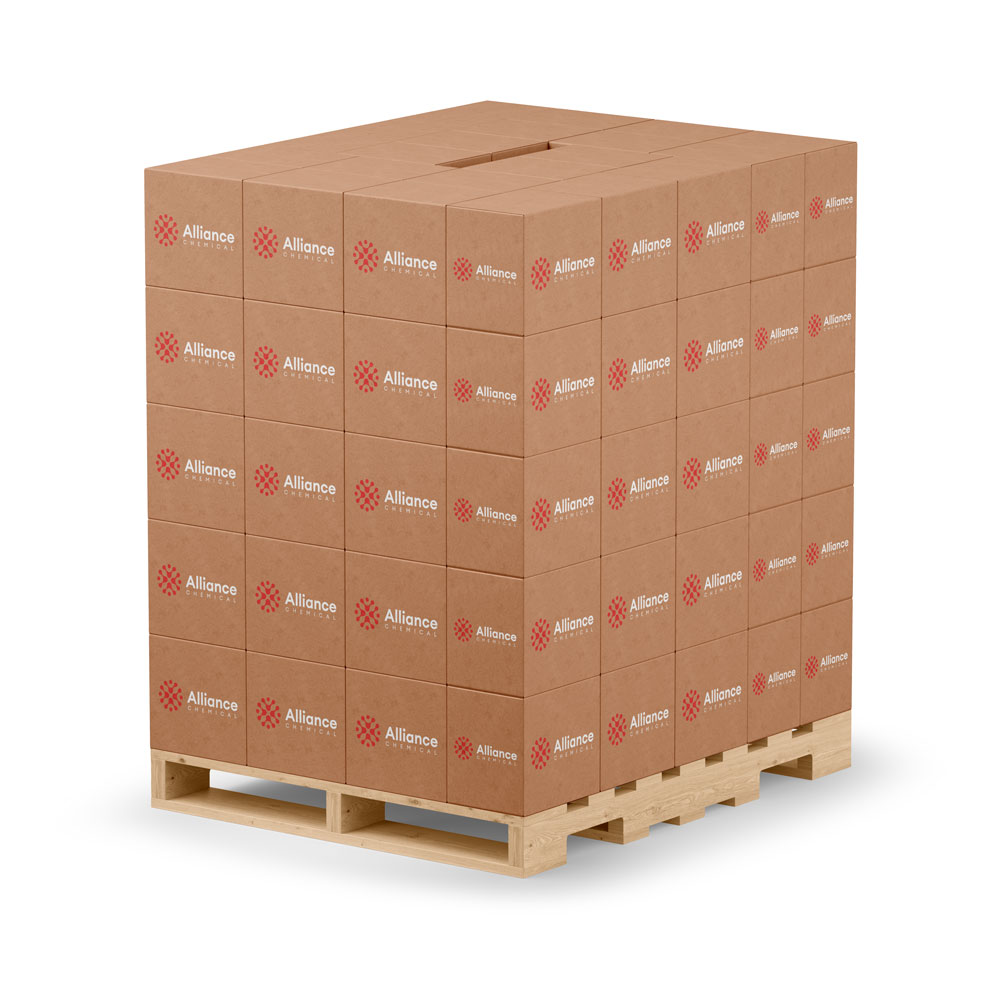
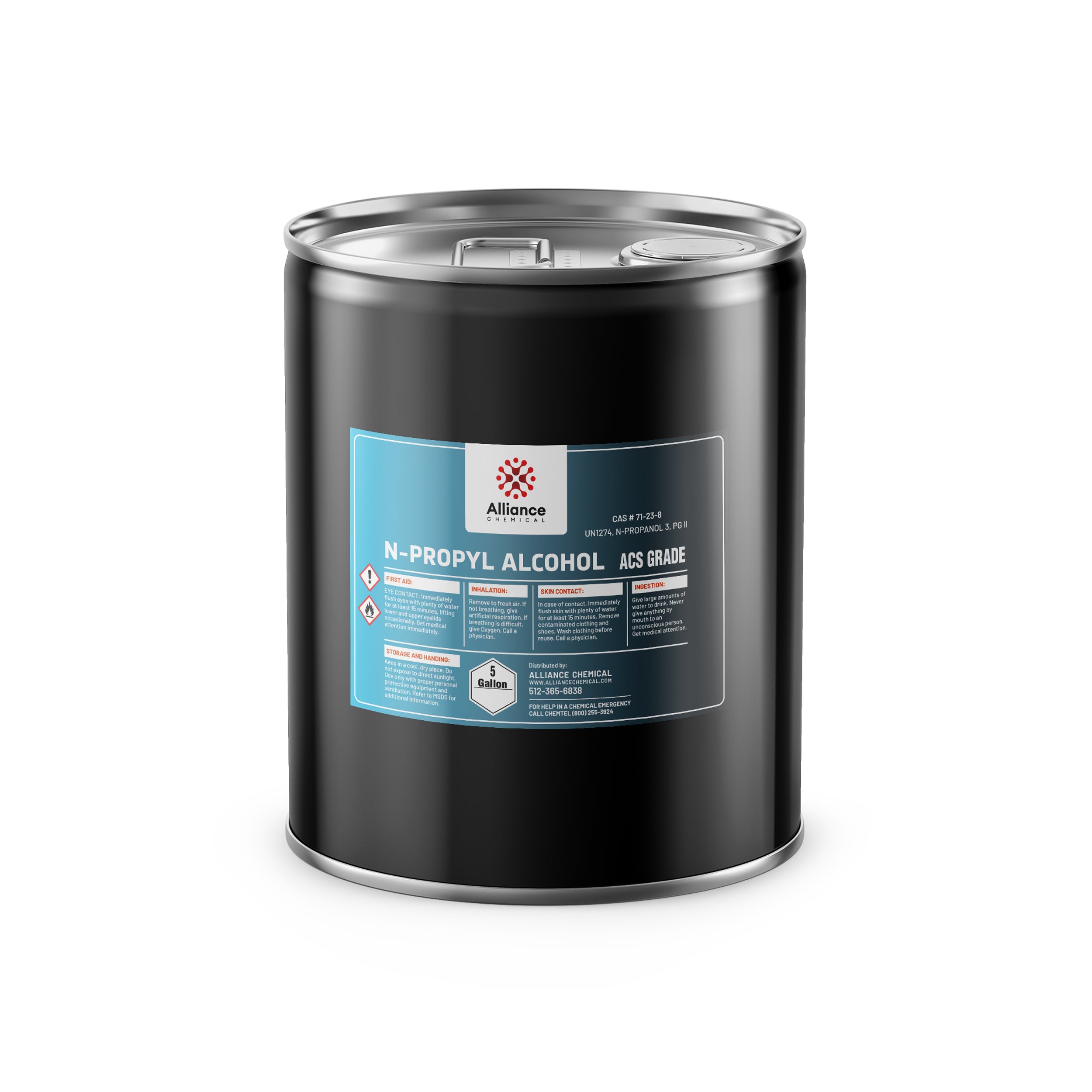
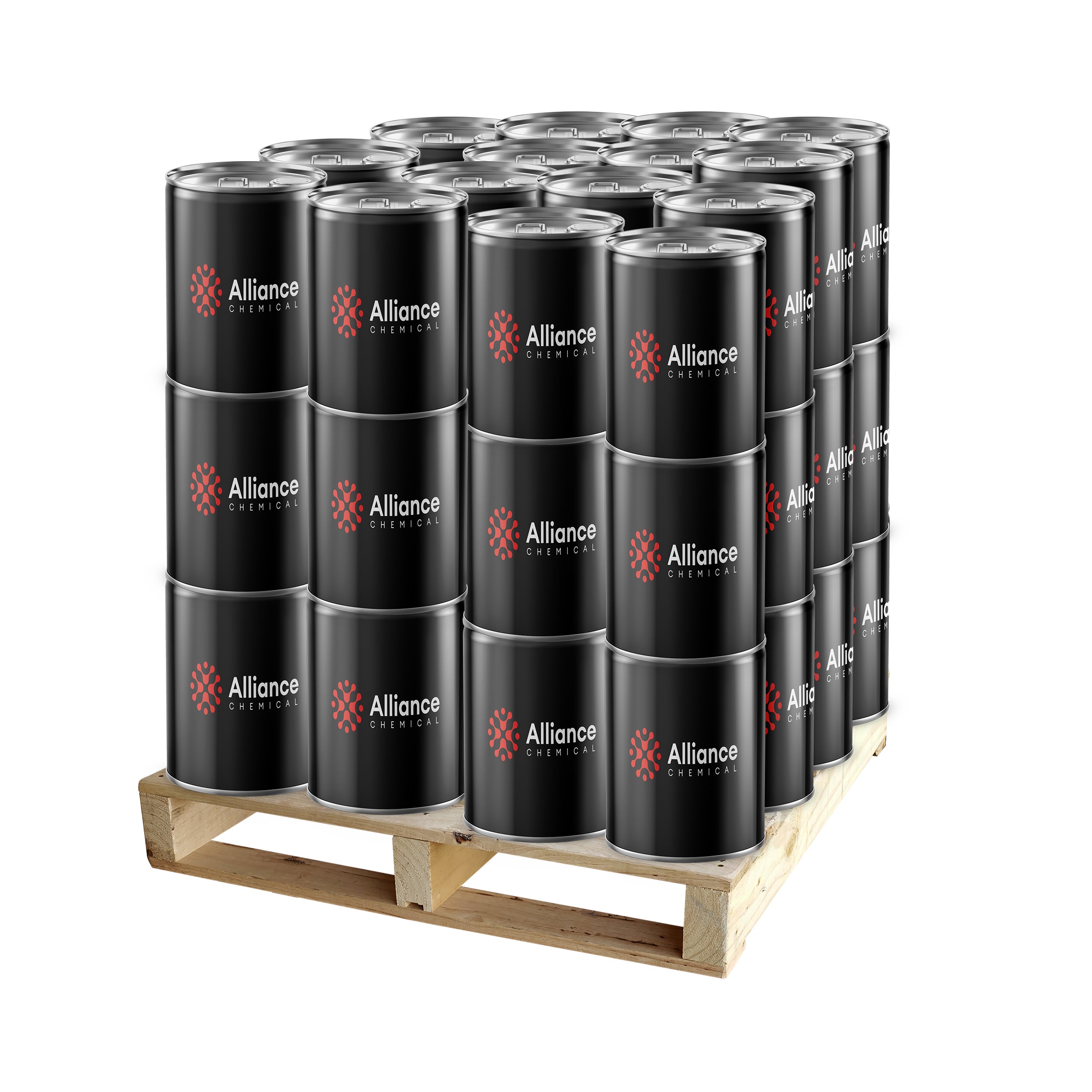

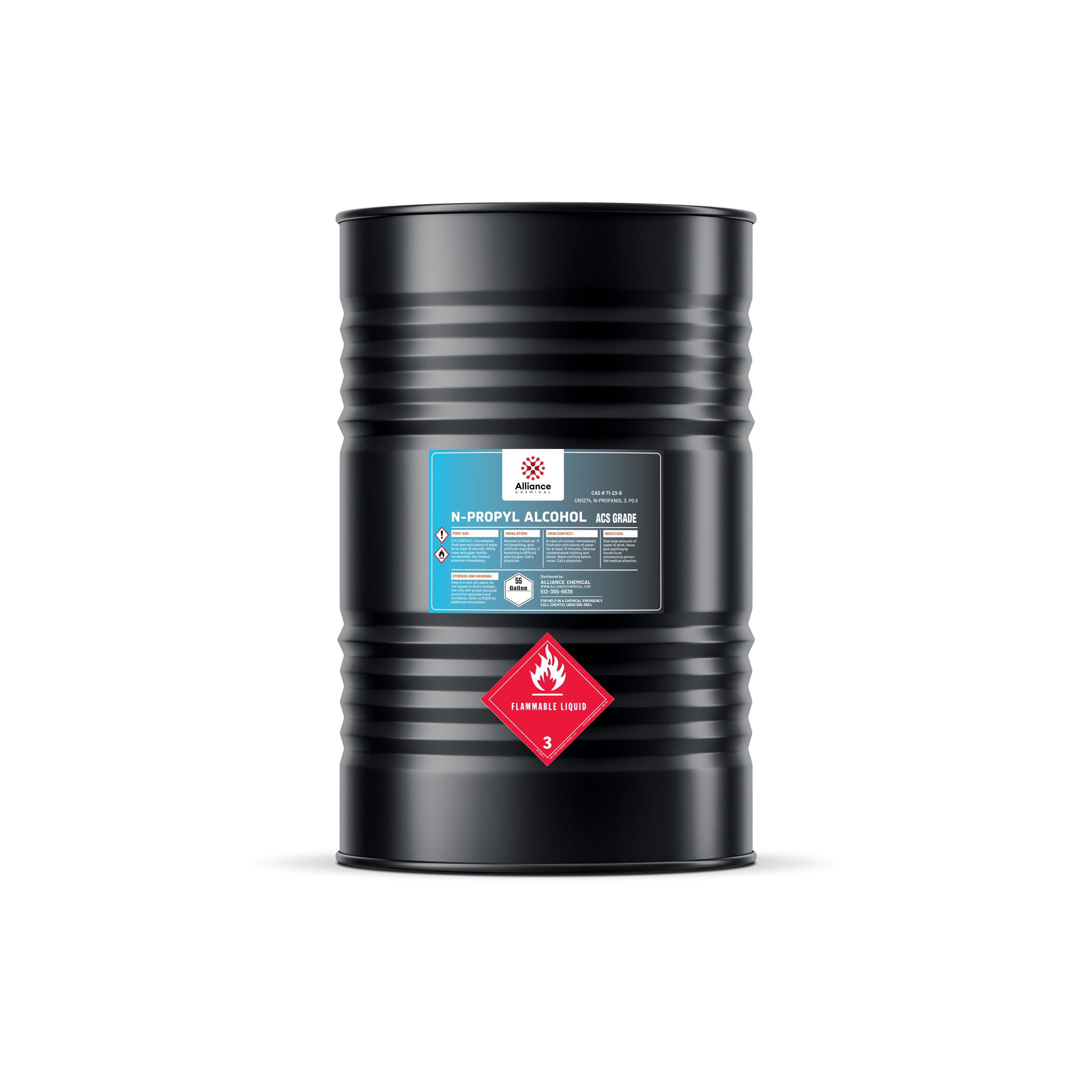

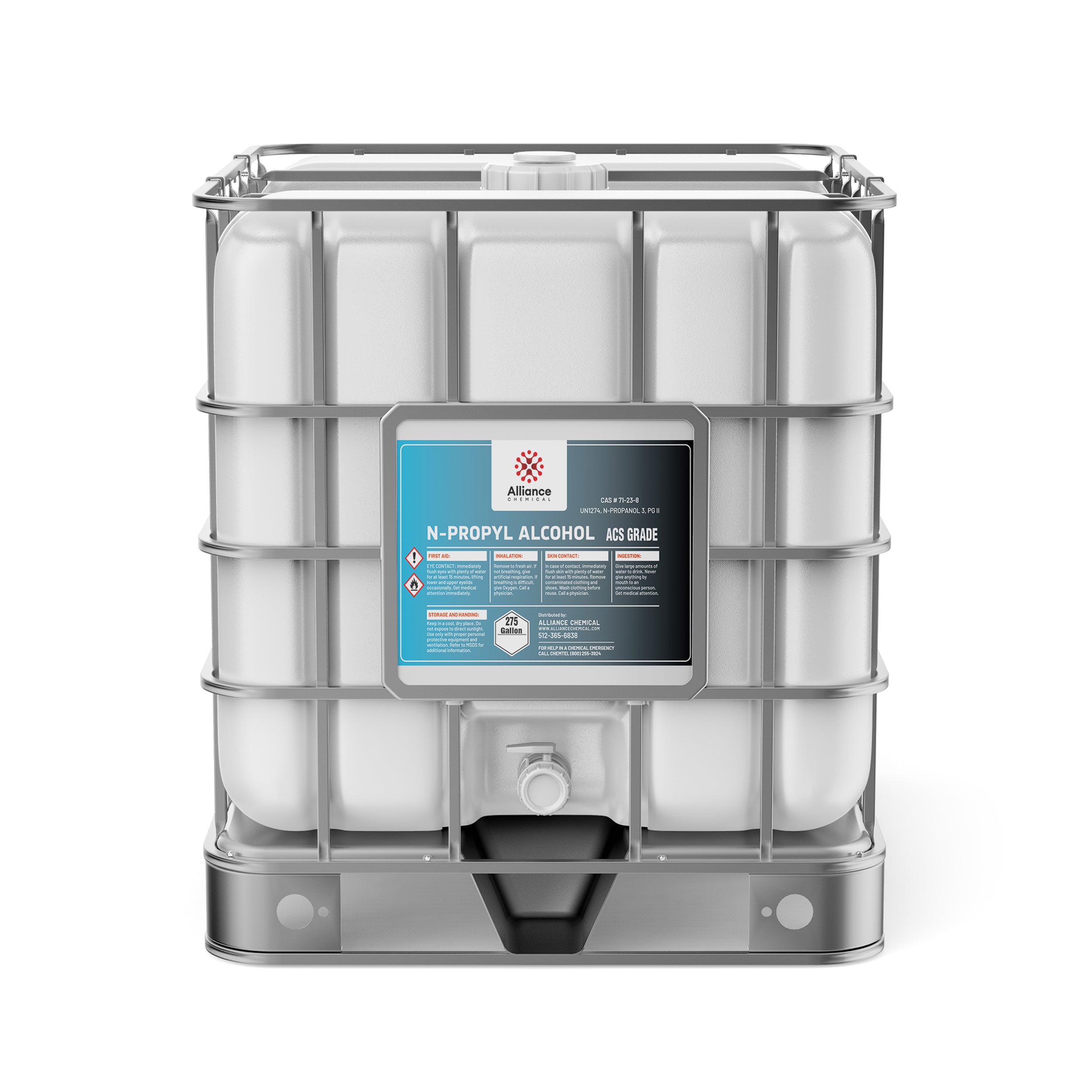
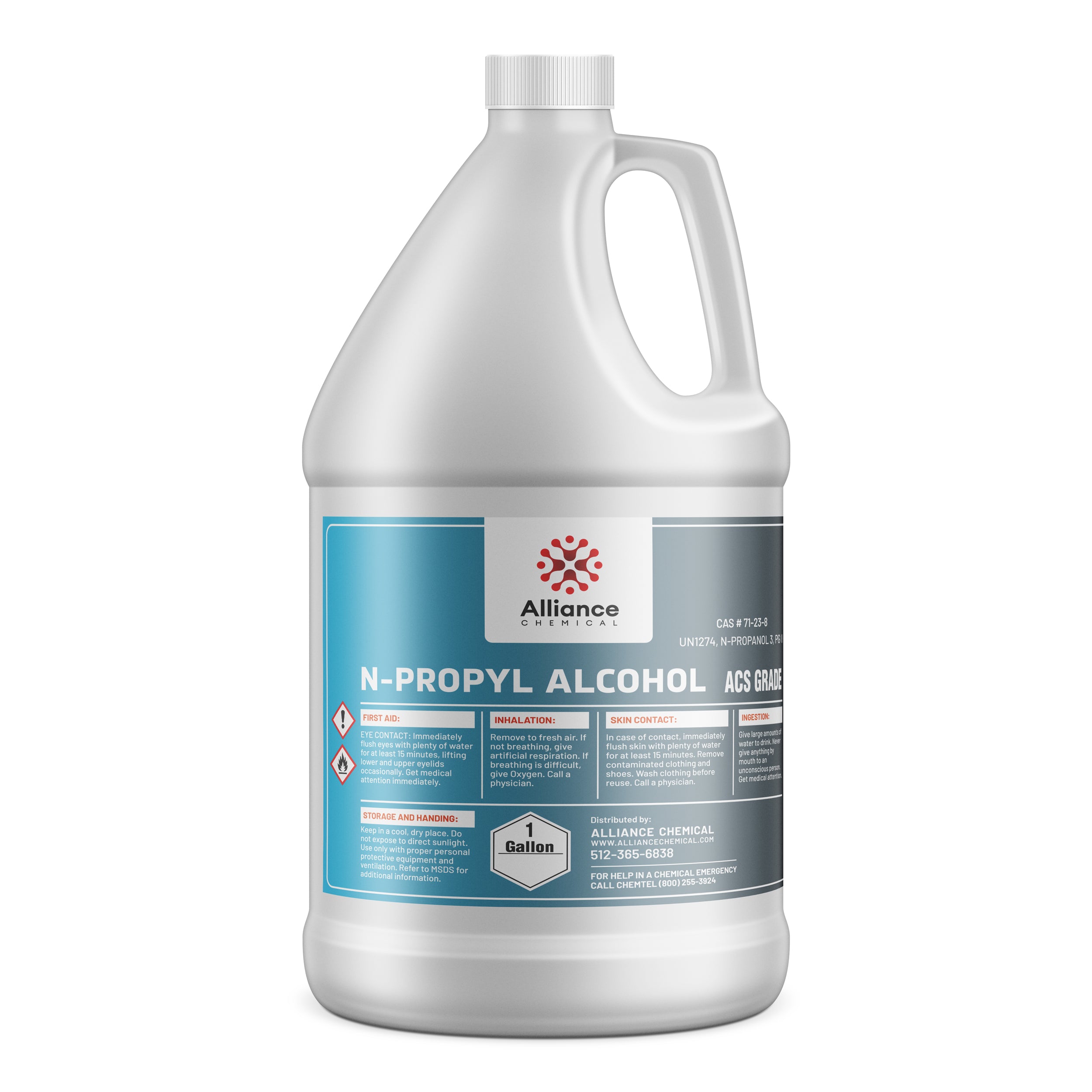
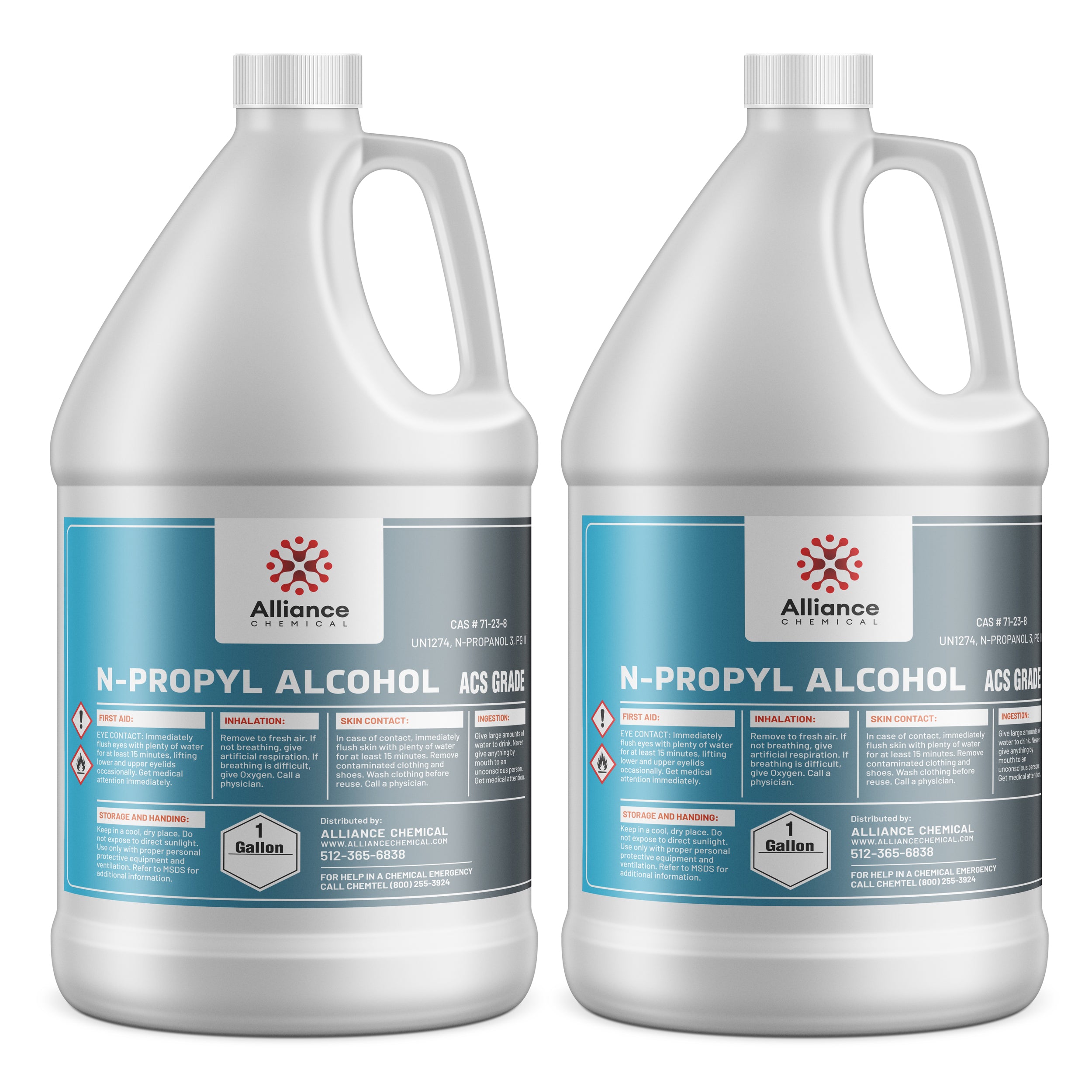
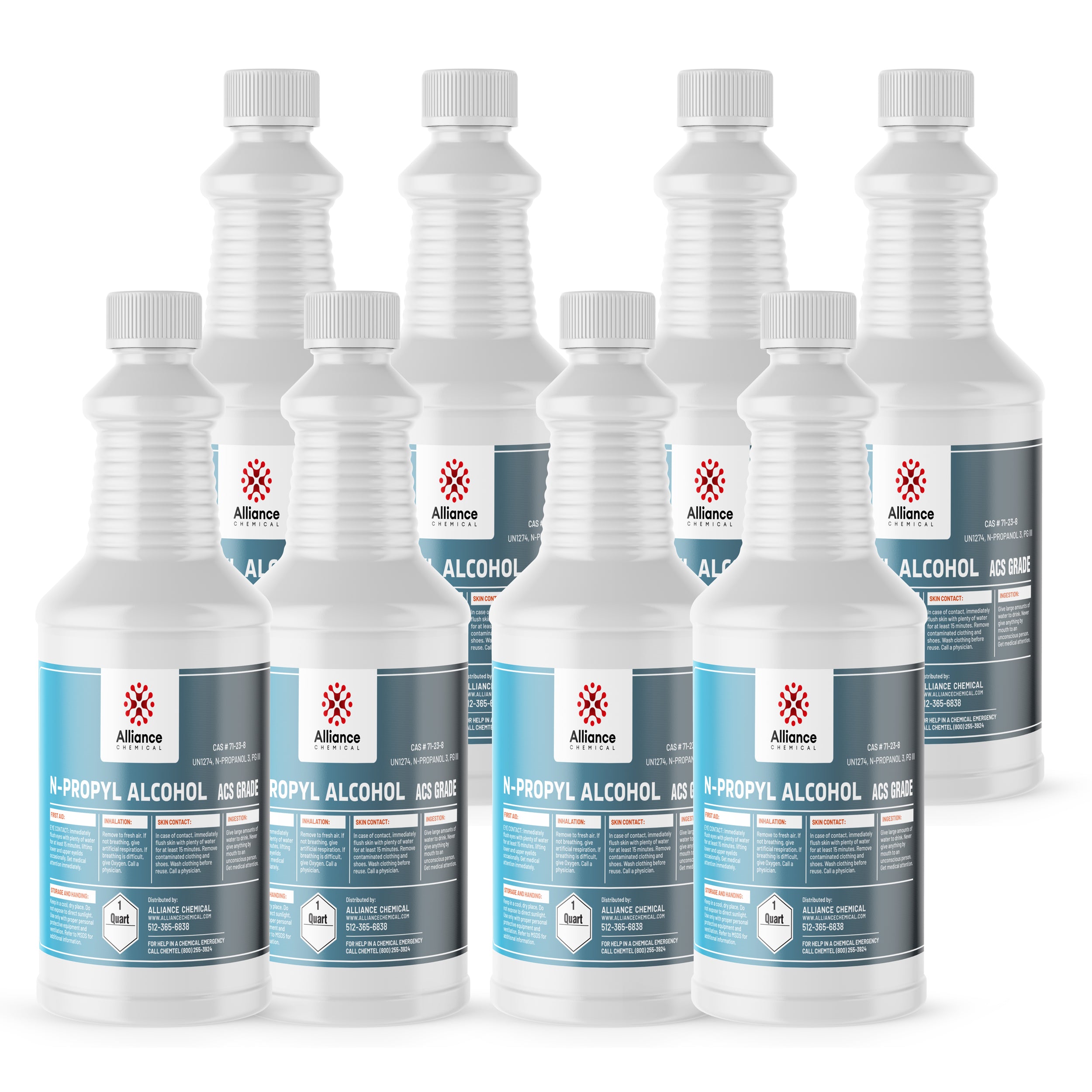
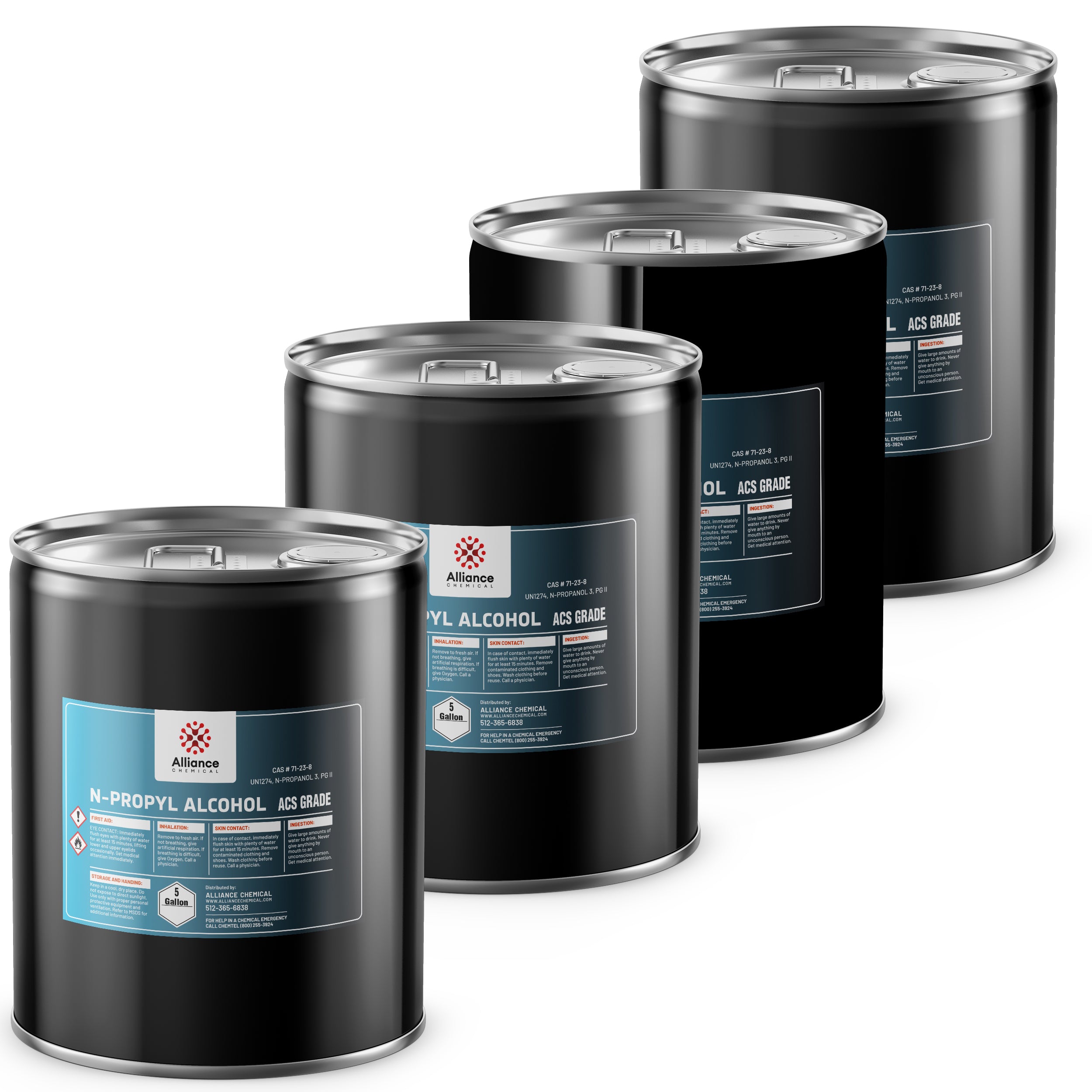

- Description
- Product Documents
Product Overview
n-Propyl Alcohol ACS Grade (CAS 71-23-8), also known as 1-Propanol, is a high-purity, colorless, flammable liquid utilized extensively in analytical and industrial environments. This ACS Reagent Grade material adheres to stringent specifications for purity, low water content, and controlled trace metal limits, making it essential for sensitive applications such as HPLC mobile phases and pharmaceutical synthesis intermediates.
Alliance Chemical supplies n-Propyl Alcohol ACS Grade in sizes ranging from 1 Quart to 330 Gallon Totes. The material demonstrates excellent solvency, mixing readily with water and most organic solvents. Its high purity ensures minimal interference in UV-visible spectroscopy and other analytical assays, supporting reproducible results in laboratory and manufacturing processes.
Key Properties
- Chemical Name: n-Propyl Alcohol (1-Propanol)
- Grade: ACS Reagent Grade
- Chemical Formula: C₃H₈O
- Molecular Weight: 60.1 g/mol
- CAS Number: 71-23-8
- Appearance: Colorless liquid
- Boiling Point: 97–99°C
- Solubility: Miscible with water and organic solvents
- Specific Gravity: 0.784 (at 20°C)
- Purity: Meets ACS specifications
Common Applications
- HPLC Mobile Phase: Used as a solvent component in reversed-phase HPLC for the separation of organic compounds, providing low UV absorbance.
- Chemical Synthesis: Serves as a vital intermediate and building block in the production of esters, amines, and other industrial chemicals.
- Laboratory Extraction: Employed in the extraction of active compounds from matrices due to its favorable polarity and miscibility profile.
- Solvent Formulations: utilized in the formulation of lacquers, coatings, and printing inks to improve flow and evaporation rates.
- Industrial Cleaning: Effective for precision degreasing of glassware and stainless steel equipment in controlled environments.
Safety Precautions
n-Propyl Alcohol is a flammable liquid and vapor. Store in a cool, dry, well-ventilated area away from heat, sparks, open flames, and hot surfaces. Keep container tightly closed. Ground and bond containers when transferring material to prevent static discharge.
Wear appropriate personal protective equipment (PPE), including chemical-resistant gloves and safety goggles. Use only outdoors or in a well-ventilated area (fume hood recommended). In case of skin or eye contact, rinse immediately with plenty of water. Refer to the Safety Data Sheet (SDS) for comprehensive handling, disposal, and emergency information.
Benefits
ACS Reagent Quality: Verified high purity for critical analytical and research applications.
Versatile Solvency: Compatible with both aqueous and organic systems for flexible processing.
Bulk Availability: Scalable packaging options from lab scale to industrial bulk totes.
Related Products
| Property | Value |
|---|---|
| Molecular Weight | 60 g/mol |
| Formula | C3H8O |
| Grade | ACS |
| Flash Point | 15 |
| Form | Liquid |
| Solubility | Soluble in water, alcohol, ether, and other organic solvents |
| Appearance | Clear, colorless liquid |
| Melting Point | -126 °C |
| Boiling Point | 97 °C |
| Specific Gravity | 0.803 |
| Industry | Industrial, Chemical |
Other top rated products
















U5P-D9K-M2X
$19.38
Liquid error (snippets/product-blocks line 100): divided by 0
Off
Unit price
/
Shipping Notice: Possible Hazmat Fees
💡 Smart Shipping Tip: Quart & Liter Sizes Often Avoid Hazmat Fees
This size may be classified as hazmat and can incur additional carrier fees. See shipping guide
- ✅ Good news: 1 Quart containers qualify as "Limited Quantity" and bypass hazmat rules
- 💡 Pro tip: Order multiple 1 Quart containers to avoid hazmat fees entirely
- 💰 Hazmat fees can get expensive - especially for larger containers (carrier charges, not our markup)
- 🚚 Ground shipping only - no expedited options for sizes over 1 Qt/1L
Required by 49 CFR § 173.150 for chemical containers larger than 1 quart. Actual fees shown at checkout. View our complete shipping guide →
✅ Great Choice! No Hazmat Fees
1 Quart containers qualify as "Limited Quantity" and avoid hazmat shipping fees.
- 🚀 Faster shipping: Eligible for expedited shipping options including air transport
- 💰 No hazmat fees: Ships as "Limited Quantity" per DOT regulations
- 📦 Convenient size: Perfect for testing or smaller applications
- ♻️ Smart choice: Order multiple quarts to get the volume you need without hazmat charges
Exempted under 49 CFR § 173.150 Limited Quantity provisions for containers ≤1 liter/quart. Learn more in our shipping guide →
Size:
Variation:
-
$19.38Delivery every$18.41
-
$27.95Delivery every$26.55
-
$41.28Delivery every$39.22
-
$63.59Delivery every$60.41
-
$44.52Delivery every$42.29
-
$72.53Delivery every$68.90
-
$120.10Delivery every$114.10
-
$3,647.53Delivery every$3,465.15
-
$168.24Delivery every$159.83
-
$639.06Delivery every$607.11
-
$4,756.69Delivery every$4,518.86
-
$1,343.37Delivery every$1,276.20
-
$4,441.35Delivery every$4,219.28
-
$5,223.82Delivery every$4,962.63
-
$5,955.15Delivery every$5,657.39
Compare Products
| Price |
|---|
| SKU |
| Rating |
| Discount |
| Vendor |
| Tags |
| Weight |
| Stock |
| Short Description |
